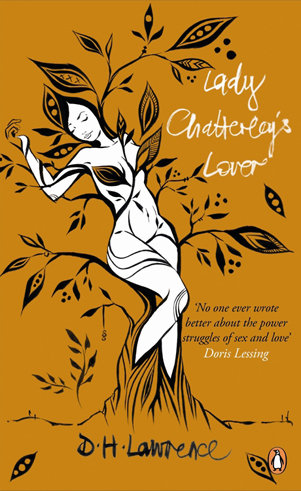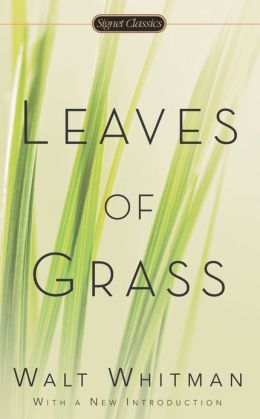After a long, blizzard-filled winter, spring finally seems to be here—an unpredictable March climate notwithstanding. Spring is a time of new beginnings and clean slates, when the last filthy vestiges of winter snow melt away and the trees burst out with fresh green buds. There’s just something about this season that makes us feel rejuvenated, purified, and ready to let go of the past. Whether that means finally cutting ties with a bad-news ex, donating the 68 percent of your clothing you never wear anymore, or cracking open a brand new book, spring is a perfect time to shake off your winter funk and try something new.
What better to read, during this season of renewal, than great books about the bittersweet joys of starting over? We’ve collected 8 books ideal for reading this season, with the lush spring settings and inspiring themes that make us feel refreshed and energized. Even when melancholy descends and a chilly breeze blows, spring never truly loses its sense of possibility, and neither do these fantastic books. (Tip: They’re enjoyed even more fully when read in the park on a sunny spring day.)
Here are 8 perfect books to read in the spring:

A Room With a View by E.M. Forster: Spring may as well be a character in this romantic comedy set in Italy and England. As Miss Lucy Honeychurch, a proper young Edwardian lady destined for a respectable marriage, explores verdant Tuscany with her genteel chaperone, she finds the intoxicating atmosphere of spring and the allure of unsuitable (but kind and soulful) George Emerson threaten to loosen her lady-like reserve: “In the company of this common man the world was beautiful and direct. For the first time she felt the influence of Spring.” Lucy’s settled path, through a properly repressed girlhood to a properly repressed marriage, no longer seems so assured, as she awakens to the possibility of a different, more open way of living.

The Witch of Blackbird Pond by Elizabeth George Speare: This YA classic captures the thrill of the first day of spring—the sense of reawakening after a long wintry hibernation and the sudden, visceral hope for better days ahead. When Kit finds herself transplanted abruptly from the luxuries of a plantation in tropical Barbados to a Puritan town in colonial Connecticut, she feels nothing at first but resentment—and cold. But as she struggles through the harsh New England winter and adjusts to the austere lifestyle of her Puritan relatives, she learns her new home isn’t quite the dark, icy prison she thought it was. As the spring thaw finally approaches, Kit also begins to soften toward Connecticut, and even considers opening herself to a new life she never thought she would want.

How It All Began by Penelope Lively: This warm, subtle novel traces the rippling consequences of an elderly woman’s mugging. Even people who are only tangentially connected to the woman are affected by this mugging, at first almost imperceptibly. As the novel goes on, these small aftershocks burgeon into life-altering crises, and more than one character finds her life has been diverted onto a new track altogether. Not all opportunities to start afresh are welcome, and not all paths can be pursued, but a sense of blossoming hope fills the pages with the scent of spring renewal.

The Roman Spring of Mrs. Stone by Tennessee Williams: In this novella, an aging actress from New York finds herself abruptly tumbled into middle age and struggles to come to terms with her new body and less exalted circumstances. In one year, she lost her husband, went through menopause, and left the stage after a disastrous turn in a role much too young for her. Now living in Rome, Mrs. Stone still grapples painfully with her lost youth and fame, and with the loneliness of widowhood, but also finds that the aging process isn’t just closing doors for her—against all odds, it’s also opening them. She may seem to be in the autumn of her life, but in a very real sense, spring has just arrived for Mrs. Stone.

Middlemarch by George Eliot: This weighty Victorian novel spans far more than a spring—and it’s been noted that the title seems to refer to the middle of March, but in fact refers to a town. Tom Nissley of The Millions remarks that Middlemarch is “really a fall book more than anything.” But, respectfully, we disagree. Eliot’s opus bursts with the vitality and optimism of an April morning; while our idealistic young heroine Dorothea struggles through the winter of an ill-considered marriage to an older (and colder) man, the coming of spring and its “bright green buds” appropriately coincides with the renewal of her hopes for a life full of love and personal fulfillment. At its heart, Middlemarch is a book about second chances, and nothing says spring more than that.

Birds of America by Lorrie Moore: Not every story in this classic short story collection is set in the spring, but the themes of renewal carry through it—albeit in Moore’s own dark, unsettling way. Moore’s trademark ability to cut to the grotesqueness at the heart of standard conventionalities—marriage, buying a new home, a campaign for local office—disrupts our comfortable relationship to the world around us and seems to threaten catastrophe at every turn. But in each story, a kernel of hope remains at the end; no matter how chilling our surroundings, the stories seem to say, there’s hope for warmth and happiness to return. Birds of America fully captures the heady mix of harsh blasts and warm breezes that signal the changing of the season.

Lady Chatterley’s Lover by DH Lawrence: As we see in A Room With a View, turn-of-the-century fiction often possesses a strong flavor of springtime. Long before the rise of flapper culture, literary greats were pushing the cultural envelope, questioning the strictures of Victorian morality, and celebrating freshness and bucolic romanticism. And, especially in this classic novel, they were celebrating sexual awakenings. The Chatterleys’ marriage has been strained by Lord Chatterley’s war injury, which has effectively ended their physical intimacy. But as spring dawns, Lady Chatterley begins to feel twinges of desire for their lowly game-keeper, and the affair they begin, all the more illicit due to the gulf between their social classes, promises them a world of not only greater sexual fulfillment, but of unprecedented freedom and possibility.
Leaves of Grass by Walt Whitman: Whitman’s poetry celebrates the natural beauties of every season, but spring and summer come in for the most lavish treatment. It’s hard to read Leaves of Grass and not feel the spring breeze on your face and warm grass under your feet. For example: “The melted snow of March, the willow sending forth its yellow-green sprouts, / […] spring-time is here!” These poems emphasize the never ending cycle of the seasons, with spring’s return just as inevitable as winter’s harshness. In “Continuities,” he writes: “To frozen clods ever the spring’s invisible law returns, / With grass and flowers and summer fruits and corn.” In Leaves of Grass, spring is an eternal promise and an unalloyed joy.

